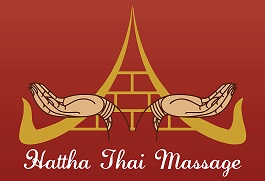Image by
Back pain
Back pain relates to the spine and its surroundings: the central part of the skeleton, the intervertebral discs between the vertebral bodies, the surrounding muscles and nerves that run within the spine and from there to the arms, back, chest and legs run.
Along with headaches, they are the most common pain. It’s for everyone, the probability of suffering such pain is very high, but most people can resume their usual everyday activities within six weeks at most. However, in around 10% of patients the pain persists for longer than six weeks. Then we speak of persistent pain that becomes chronic or returns at ever shorter intervals.
On the role of the intervertebral discs in back pain
It is only today that we know that there is not necessarily a connection between pain and intervertebral discs, but that there are many of factors that play a role in back pain.
The intervertebral discs are part of the mobile structure of the spine. The spinal muscles allow us to rotate, tilt, bend and extend the trunk. The vertebral joints are moved by the back muscles. In addition, the supporting muscles hold the body when sitting or standing – automatically, without you having to think about it. The vertebral bodies are held together by the intervertebral discs in between at the same time protected from load peaks. The intervertebral discs, which are made up of an outer fibrous ring and a gelatinous core, ensure these functions to a high degree elasticity.
From the age of 20 onwards, their ability to bind water decreases steadily, the intervertebral discs become porous, lose fluid and therefore their elasticity. Tears occur in the outer fiber ring, causing the inner core to emerge and appear as a bulge. This process is in itself a normal aging process that initially has nothing to do with pain.
For example, if you examine healthy people using the magnetic resonance tube, a high percentage will find pathological changes in the intervertebral disc, but these people do not complain of pain. From this observation it was deduced that not everyone a herniated disc must lead to pain. Changes in the intervertebral disc, like wrinkles on the face, initially only indicate that we are getting older.
To understand back pain, more must be taken into account than just the changes in the bones and intervertebral discs. Tension, incorrect strain and inflammation also play an important role. It has proven to be useful to consider several factors when assessing the causes of pain.
Development of back pain:
A pain reaction is made up of the muscular effect and the performance of our brain (processing and performance of pain control). This pain reaction makes biological sense because an injury should not lead to further damage. The reaction after stepping on the shard of glass leads to pulling the foot away and initiating a meaningful action, such as cleaning the wound or applying a bandage.
It is an acute pain that is typically bright and the intensity decreases after some time due to the body’s own control mechanisms. This is referred to as the body’s own pain control. We are also familiar with such acute, sharp pain from lumbago, from acute incorrect or overloading of the joints of the spine.
However, the body’s ability to relieve acute pain depends less on the pain event itself and more on the conditions under which this event occurs. Acute pain can result in professional or private stress cause persistent muscular tension. The muscular tension that you have become familiar with in response to pain will not and cannot subside under certain circumstances then be perceived as painful.
Today we know that permanently tense muscles lead to a chronic inflammatory reaction. This chronic pain is usually dull and boring. A physically or mentally stressful working relationship, a difficult work task, an interpersonal conflict situation or a bereavement can lead to permanent muscular tension over months or even years and impair the body’s ability to control pain. In addition to the triggering event, the condition in which the pain hits us plays an important role in the development of back pain.
As with acute pain, chronic pain also leads to activation of certain muscle groups: the chest and abdominal (flexor) muscles shorten extensor side of the back atrophies.
In patients with chronic back pain, an imbalance between the flexor and extensor muscles of the trunk can usually be identified. These muscle imbalances are made worse by the same movements at work or at home and by the one-sided strain on our body functions: We stand or sit at our workplace every day, we always work on the same tasks. However, such one-sided stress puts a strain on our muscular postural functions: the abdominal and chest flexor muscles of the trunk continue to shorten and the muscles on the back continue to atrophy. Even the upright posture is thrown out of balance by the one-sided stress, without any physical training or exercise stimuli restoring the lost central position.
Monotony and a lack of body-appropriate movement stimuli lead to muscular malfunctions and incorrect strain. This means that physical and mental tension can complement each other unfavorably if muscle tension persists. The tense and untrained muscles can no longer optimally fulfill their tasks, namely moving, supporting and protecting the spine. The body reports tension pain, primarily in the lumbar and sacral area in the neck and neck area, but also with headaches. Most headaches are so-called tension headaches, which are caused by permanently tense neck and neck muscles.
Pain in the spine area has many causes:
- Physical and mental overload with muscular tension
- Our everyday life, characterized by stress, one-sidedness and a lack of compensatory movement
- Age-related wear and tear on various organs of our body. The general distinction between pain can also be transferred to back pain:
- Acute pain – lumbago – local to the spine, bright and strong
- Chronic pain, rather dull to boring
- Nerve pain in the arm and leg, pulling and cutting, sometimes burning.
Who should you go to first?
As long as partial neurological deficits are temporary, conservative treatment methods are to be preferred; total neurological deficits, however, represent an urgent medical indication and are a reason for immediate clarification regarding possible surgical intervention.
In contrast to your family doctor, Hattha Thai Spa in Basel can usually offer you an appointment on the same day. With this high availability we are able to address our customers’ problems promptly.
As an experienced Thai Massage therapist, one can see where the problem areas in the muscle groups are when we palpate our customers and we know the nerve courses from the spine.
Treatment plan
The doctor and the therapist work with the patient to develop a treatment plan based on the questions and the examination results, which, in addition to pain relief, has one main goal: the patient must be at the center of all efforts so that he can learn how to deal with his pain and how he can get rid of them again – in collaboration with a doctor and therapist.
The doctor supports the patient in this, he essentially offers him help to help himself. He explains to him that pain can be relieved with medication and inflammation of nerves and muscles can be inhibited, but pain relief must be accompanied by regaining physical functions, otherwise there will be no improvement in the long term. How to deal with your own body needs to be retrained. This includes improving posture, i.e. muscular functions (strength, endurance, dexterity) as well as the ability to relax, i.e. relieve tension from the muscles.
A special relaxation training serves to relieve the tension and strives to relieve the patient’s fears, e.g. B. to take because of pain. A sensibly structured therapy is actively supported by the patient. In most cases, surgical intervention on the intervertebral disc or spine can be avoided. And patients gain the skills to better deal with their pain in the future. Experience has shown that all treatments that the patient sees as his own concern are more successful than treatments in which the patient behaves passively and allows them to endure. With conservative treatment, the patient learns how to deal with pain competently. This can help avoid operations and help to better recognize and assess new pain in the future.
Dealing with back pain
Science now agrees that a certain amount of pain is part of life and can be considered normal. After all, acute pain always serves as a warning that something might be happening that could harm our body. The goal of pain therapy cannot be to eliminate pain. Rather, pain therapy develops ways to deal with a natural level of pain in a bearable way.
Examples of how to deal with pain in a tolerable way in general:
- How much compensation (exercise, sport) do I need?
- How much relaxation (active/passive (regular Thai massage)) do I need?
- How do I feel my inner vibrations and how do I deal with them?
- How do I learn to say no?
- How do I deal with stress, anger and sadness?
Final note
As long as partial neurological deficits are temporary, conservative treatment methods are to be preferred; total neurological deficits, however, represent an urgent medical indication and are a reason for immediate clarification regarding possible surgical intervention.
I hope that these comments will take some of the fear and uncertainty out of dealing with your pain and I also hope that it will give you a little more hope in treating your pain.
A. Pluemchai
Source: (modified excerpt by A. Pluemchai)


